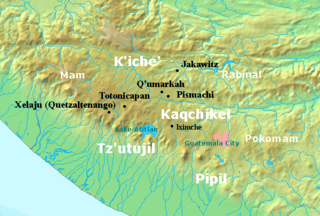Publications
Books
This section's use of external links may not follow Wikipedia's policies or guidelines.(August 2020) |
Time and the Highland Maya (1992) [9]
The Beautiful and the Dangerous: Encounters with the Zuni Indians (2001) [10]
The Woman in the Shaman's Body: Reclaiming the Feminine in Religion and Medicine. (2005). [11]
Co-authored or edited books
Teachings from the American Earth: Indian Religion and Philosophy (1975) [12]
Dreaming: Anthropological and psychological interpretations. (1987) [13]
Selected articles and book chapters
Tedlock, B. (1981). Quiché Maya dream interpretation. Ethos, 9(4), 313-330. doi.org/10.1525/eth.1981.9.4.02a00050
Tedlock, B. (1982). Sound texture and metaphor in Quiche Maya ritual language. Current Anthropology , 23(3), 269-272. doi.org/10.1086/202830
Tedlock, B. (1983). Zuni sacred theater. American Indian Quarterly , 93-110. doi:10.2307/1184258
Tedlock, B. (1984). The Beautiful and the Dangerous Zuni Ritual and Cosmology as an Aesthetic System. Conjunctions, (6), 246-265. jstor.org/stable/24515110
Tedlock, B. (1985). Hawks, meteorology and astronomy in Quiché-Maya agriculture. Archaeoastronomy , 8, 80.
Tedlock, B. (1986). Keeping the breath nearby. Anthropology and Humanism Quarterly, 11(4), 92-94. doi.org/10.1525/ahu.1986.11.4.92
Tedlock, B. (1987). An interpretive solution to the problem of humoral medicine in Latin America. Social science & medicine, 24(12), 1069-1083. doi.org/10.1016/0277-9536(87)90022-0
Tedlock, B. (1991). From participant observation to the observation of participation: The emergence of narrative ethnography. Journal of Anthropological Research , 47(1), 69-94. doi.org/10.1086/jar.47.1.3630581
Tedlock, B. (1992). The role of dreams and visionary narratives in Mayan cultural survival. Ethos, 20(4), 453-476. jstor.org/stable/640279
Tedlock, B. (1999). Maya Astronomy: what we know and how we know it. Archaeoastronomy, 14(1), 39.
Tedlock, B. (1999). Sharing and interpreting dreams in Amerindian nations. In D. Schulman & G.G. Stroumsa (Eds.), Dream cultures: Explorations in the comparative history of dreaming, (pp. 87–103.) Oxford University Press. [14]
Tedlock, B. (2001). Divination as a way of knowing: Embodiment, visualisation, narrative, and interpretation. Folklore , 112(2), 189-197. doi.org/10.1080/00155870120082236
Tedlock, B. (2004). Narrative ethnography as social science discourse. Studies in Symbolic Interaction, 27, 23-32. doi.org/10.1016/S0163-2396(04)27004-1
Tedlock, B. (2004). The poetics and spirituality of dreaming: A Native American enactive theory. Dreaming, 14(2-3), 183–189. doi.org/10.1037/1053-0797.14.2-3.183
Tedlock, B. (2006). Toward a theory of divinatory practice. Anthropology of Consciousness, 17(2), 62-77. doi.org/10.1525/ac.2006.17.2.62
Tedlock, B. (2007). Bicultural dreaming as an intersubjective communicative process. Dreaming, 17(2), 57–72. doi.org/10.1037/1053-0797.17.2.57
Tedlock, B. (2009). Writing a storied life: Nomadism and double consciousness in transcultural ethnography. Etnofoor, 21(1), 21-38. jstor.org/stable/25758148
Tedlock, B. (2013). Braiding evocative with analytic autoethnography. In S.L. Holman Jones, T.E. Adams, & C. Ellis (Eds.), Handbook of autoethnography, 358-362. [15]
Co-authored articles
Tedlock, B., & Tedlock, D. (1985). Text and textile: Language and technology in the arts of the Quiché Maya. Journal of Anthropological Research, 41(2), 121-146. doi.org/10.1086/jar.41.2.3630412
Tedlock, D., & Tedlock, B. (2002). The Sun, Moon, and Venus Among the Stars: Methods for Mapping Mayan Sidereal Space. Archaeoastronomy, 17.









